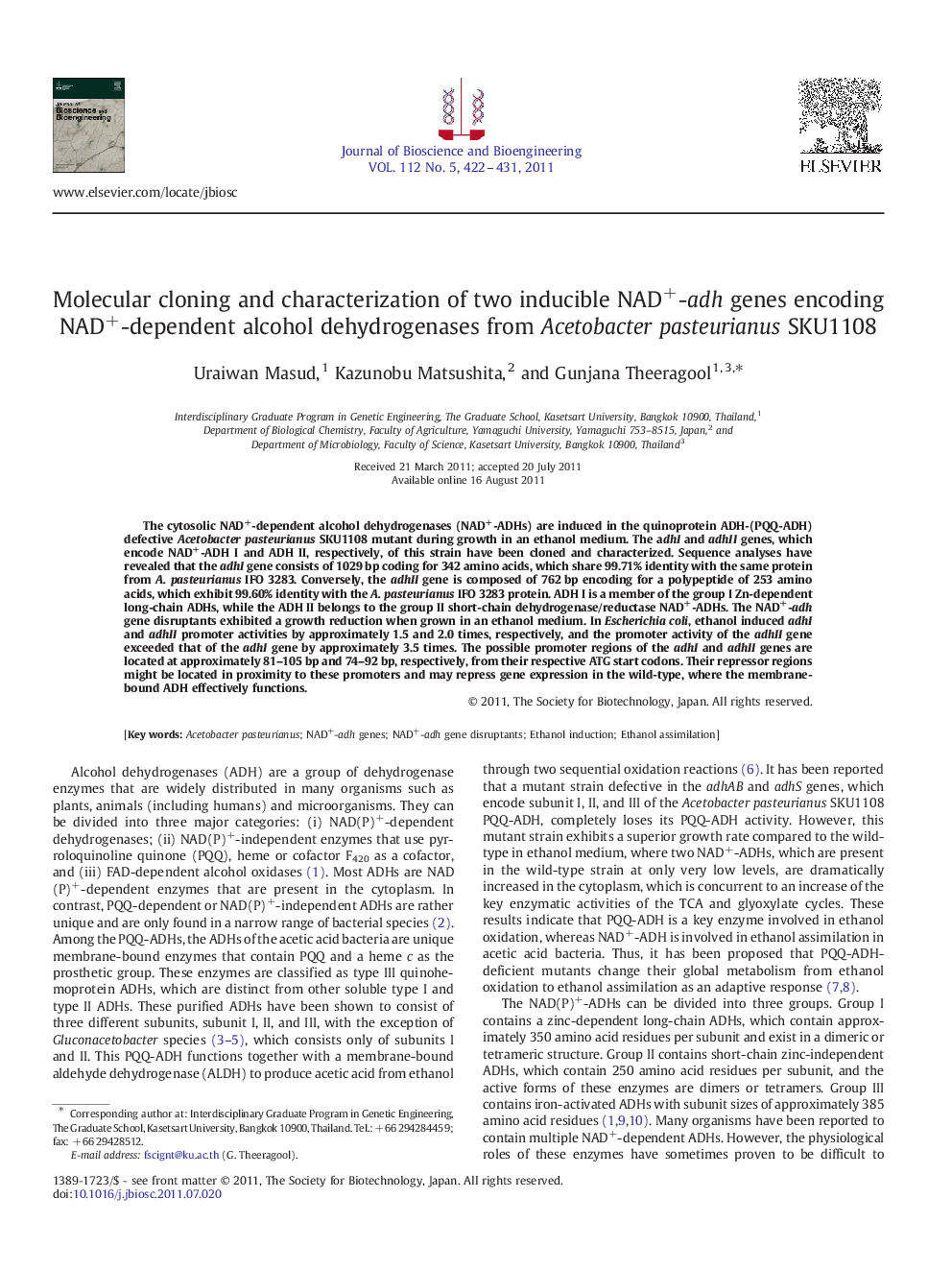| کد مقاله | کد نشریه | سال انتشار | مقاله انگلیسی | نسخه تمام متن |
|---|---|---|---|---|
| 21434 | 43222 | 2011 | 10 صفحه PDF | دانلود رایگان |

The cytosolic NAD+-dependent alcohol dehydrogenases (NAD+-ADHs) are induced in the quinoprotein ADH-(PQQ-ADH) defective Acetobacter pasteurianus SKU1108 mutant during growth in an ethanol medium. The adhI and adhII genes, which encode NAD+-ADH I and ADH II, respectively, of this strain have been cloned and characterized. Sequence analyses have revealed that the adhI gene consists of 1029 bp coding for 342 amino acids, which share 99.71% identity with the same protein from A. pasteurianus IFO 3283. Conversely, the adhII gene is composed of 762 bp encoding for a polypeptide of 253 amino acids, which exhibit 99.60% identity with the A. pasteurianus IFO 3283 protein. ADH I is a member of the group I Zn-dependent long-chain ADHs, while the ADH II belongs to the group II short-chain dehydrogenase/reductase NAD+-ADHs. The NAD+-adh gene disruptants exhibited a growth reduction when grown in an ethanol medium. In Escherichia coli, ethanol induced adhI and adhII promoter activities by approximately 1.5 and 2.0 times, respectively, and the promoter activity of the adhII gene exceeded that of the adhI gene by approximately 3.5 times. The possible promoter regions of the adhI and adhII genes are located at approximately 81–105 bp and 74–92 bp, respectively, from their respective ATG start codons. Their repressor regions might be located in proximity to these promoters and may repress gene expression in the wild-type, where the membrane-bound ADH effectively functions.
Journal: Journal of Bioscience and Bioengineering - Volume 112, Issue 5, November 2011, Pages 422–431